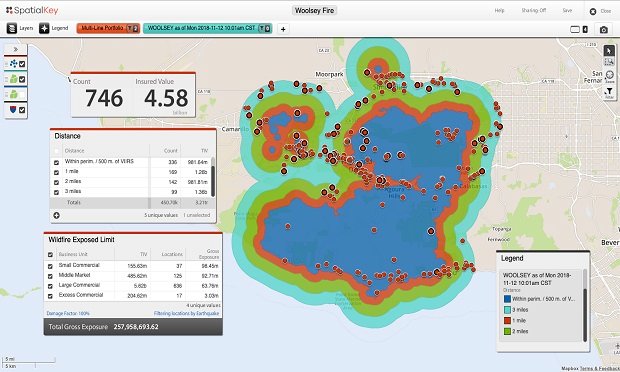Thanks to a compelling business case and a proven track recordin banking and other industries, a growing number offorward-looking life insurance companies have embraced predictivemodeling and are seeing tangible benefits from initial investmentsin new tools and processes.
|To date, predictive modeling in the life insurance industry hasprimarily been considered for underwriting because of the costsavings and increased speed-to-issue. However, it's now gainingtraction in other areas and functions, such as sales and marketingprograms, where the value proposition is similarly clear. If theexperience of the property and casualty (P&C) insurance sectoris any indication, the growing adoption by life insurers shouldcome as no surprise. Indeed, there is a pervasive sense among lifeinsurers that predictive modeling's time has come.
|Lessons from the P&C Sector
|During the last decade, predictive modeling tools and techniqueshave caused significant shifts in the competitive landscape of theP&C sector, starting with underwriting, where advancedsegmentation has resulted in greater growth andprofitability. Because of this success, P&C carriersrolled out predictive modeling capabilities in other areas of thebusiness. In product management, for example, it has been used inpricing, feature selection and class plan design. Within claimsoperations, P&C carriers leverage predictive modeling forresource allocation and anti-fraud efforts.
|A number of industry observers and analysts have credited thesophisticated use of predictive modeling as the driving forcebehind the impressive market share gains and rapid growthtrajectory of formerly "middle-of-the-pack" carriers. Thealteration of the competitive landscape has confirmed thatpredictive modeling offers both top-line and bottom-line benefits.It is not surprising, then, that predictive modeling has become anindustry-leading practice in underwriting, product management andclaims. A few forward-looking companies have successfully expandedpredictive modeling into risk management, marketing, anddistribution, as well.
|The life insurance sector has been laggard in the use ofpredictive modeling. Yet, leading insurers have begun implementingthe same techniques and have started to realize tangible value fromrelatively modest investments. Effective adoption starts with asense of urgency about taking action supported by a quantifiablebusiness case and targeted applications based on sound actuarialand business principles.
|The Business Case for Life Insurers
|Within life insurance underwriting processes, there has been aconcentrated push during the last several years to produce moreimmediate underwriting decisions for as many policies as possible,while maintaining a competitive product offering and profitablecustomer base. Traditionally, in order to qualify for the lowestpossible premium, potential customers undergo a fully underwrittenapplication process, which involves medical tests, such as invasiveblood and fluid tests, EKG scans or full medical exams, based oninsurance amount and risk factors such as age. Statements fromattending physicians may also be required before decisions can bereached. The testing is typically expensive and time-consuming,sometimes taking weeks or months to produce underwriting decisions.Further, the long, traditional process has been a barrier topurchase for many consumers, with higher non-taken rates for thosecustomers who are finally offered policies. Companies not wantingto utilize a fully underwritten application process have so farbeen limited to simplified issue and guaranteed issue underwritingguidelines. However, because the premiums associated with theseguidelines are higher than the best premiums offered in themarketplace, most companies are at a competitive disadvantagerelative to their peer group. That is why this option is just notfeasible for many insurers.
|To differentiate themselves from theircompetitors, some insurers turned to automated underwriting as ameans to reduce costs and streamline these processes.Straight-through processing and electronic interfaces for policyapplications eliminate the need for costly and error-prone manualdata entry. Furthermore, automated underwriting can utilizeelectronic applications with "drill-down" capabilities. For manyapplicants, this means fewer questions and a faster applicationprocess. Workflow tools and business rules furtherstreamline the process by automating the ordering of medical testsand by recommending approval of (and in certain instances actuallyapproving) applications without underwriter involvement. Suchunderwriting systems have the added advantage of being able toautomatically assign tasks and cases to the right underwriter atthe right time, based on current workloads and resourceavailability. These capabilities allow underwriters to focus on therisk assessment of borderline cases.
|Predictive modeling should be viewed as the next step beyondautomated underwriting. Specifically, it streamlines and optimizesunderwriting decision-making by applying business rules andenhancing traditional medical underwriting information withexternal data. This rules-based approach extends the processefficiency gains and produces underwriting decisions in a fastertime frame and within a company's existing underwritinginfrastructure.
|As early adopters of predictive modeling in the life insurancesector have shown, external data provides an important set ofpredictors. These additional data sets include prescriptionhistory, motor vehicle reports and family history, as well asrelevant lifestyle data, like exercise and diet. But early adoptersalso use complementary data sets, including:
- Demographic information: population density, medical careindex;
- Personal attributes: gender, age, occupation, education,marital status; and
- Finances: assets, income, credit history.
Such information is generally less expensive and more readilyavailable than information produced from traditional underwritingtests. The end result is that insurers with the rightinfrastructure can deliver underwriting decisions to manyapplicants within minutes or hours – not weeks or months.
|In evaluating any data source or element used in theunderwriting decision, consideration needs to be given to theimportance and acceptance of those data sources. The data sourceneeds to be predictive, but also meet certain public acceptancethresholds and associated legal requirements. However, even when apredictive data source does not meet the acceptance and legalcriteria, there are often alternative data sources that can providenearly the same predictive power, while being publicly and legallyacceptable.
|Moving Past the Challenges
|When considering the deployment of predictive modeling, the mostcommon concerns for insurers are related to pricing, anti-selectionby agents and reinsurer attitudes toward these risks. From apricing perspective, the primary concern involves the riskclassification derived from underwriting based on predictivemodeling versus that from traditional underwriting. If the goal isanything other than replicating the current traditionalunderwriting techniques, life insurers must account for alldifferences that may develop.
|Specifically, they will need to estimate the impact inunderlying pricing assumptions and the resulting effect onprofitability in determining whether premiums should be adjusted toreflect underwriting changes. Balancing expense savings, mortalityrisk premiums and premium growth potential will be important whenpricing new products. Obviously, pricing actuaries havean important role to play in designing an optimal approach topredictive modeling underwritinginitiatives.
|In terms of agent anti-selection, the critical step is tocompare risk-scoring results of individual agents to therisk-scoring results of all agents. The risk-scoringresults will include the attribution of predictive modeling scoresand traditional medical underwriting scores associated with finalunderwriting decisions. By analyzing the distribution of riskscores, it is possible to identify outliers and to flag agents whoare at the extremes. Remediation steps to address anti-agentselection can include everything from changing of underwritingrules to an evaluation of the agency force.
|Finally, some life insurance companies may find that theirreinsurers are not willing to offer the same competitivereinsurance rates for predictive modeling underwriting. In suchcases, life insurers may wish to apply predictive modeling only inunderwriting polices beneath their retention limit. Alternatively,they can seek to negotiate experience refunds for businessunderwritten using predictive models. The experience refund allowsthe insurance company to secure reinsurance coverage through theirpreferred reinsurance provider at a higher premium relative totraditional underwriting techniques. However, if theiractual experience develops as expected, the life insurance companythen receives a refund on that higher premium. Over time, asexperience develops and the reinsurer confirms that underwriting isperforming within the company's expectations, the need for thehigher premiums and associated experience refunds will eventuallybe eliminated.
|Projecting & Capturing theValue
|The value proposition for predictive modeling for life insurersstarts with more efficient underwriting.
|With automated underwriting and predictive modeling, the goal isto deliver instantaneous underwriting decisions for at least 60-80percent of new life policies issued. Achieving this goal eliminatesthe cost of superfluous medical tests and reduces resource needsthrough the automation of manual tasks leading to greater costsavings.
|Premium growth and increased sales are an equally important partof the value proposition. Generally speaking, there is highcorrelation between the amount of time it takes to underwrite alife policy and the non-taken rate. Policies that are themost time-consuming and expensive to underwrite are also the leastlikely to be taken. Generating more policies through a moreefficient underwriting process will reduce the non-taken rate andincrease new business production. In addition, by differentiatingyour speed to issue relative to your peer group, you have helpedyour distribution system to drive new business growth and,therefore, made your company more attractive to new producers.
|Consider a company writing 100,000 new life policies with anaverage premium of $800 and underwriting and medical costs of $150per policy. Cutting those costs to $90 and reducing the non-takenrate from eight percent to five percent would generate $6 millionin cost savings and $620,000 in additional profit from increasedpolicy retention. That is an eight percent performance gain on theoriginal premium. In other words, predictive modeling can boostboth the top and bottom lines.
|Predictive models can be improved and enhanced over time as moredata becomes available. Therefore, companies conducting initialfeasibility studies would be able to address near-term gains andsimultaneously take a longer-term view of the future value to becreated as models become more sophisticated.
|Looking more closely at the top line, there is also anopportunity for life insurers to bolster their target marketing andlead sourcing programs. Consider the capabilities of banks, creditproviders and consumer packaged goods companies to deliver tailoredproduct offerings to individuals just after major events, like homepurchases or the birth of a child. Insurers could similarly targetfully underwritten insurance options for customers at specificevents and milestones, provided they have the capacity to identifythe individuals most likely to buy.
|Further, predictive modeling will enable lead sourcing programsto effectively balance potential policyholders in terms of risk,retention and profitability profiles. The resulting advantagesinclude more efficient allocation of marketing budgets, improvedalignment between marketing and underwriting and optimizedacceptance rates of policies that are least likely to lapse.Finally, life insurers can gain clearer insight into the geographicregions with greatest sales and profit potential.
|Taking the First Steps
|Life insurance companies ready to explore predictive modelingshould consider the necessary steps, which have been provenenablers for smooth, efficient deployments at P&C carriers, aswell as the leading-edge adopters in the life insurance sector.
|First, gain a clear understanding of the value chain componentsdriving the company's profit and growth agenda in order to craft afeasibility study to build an objective business case. It is oftena good idea to test profitability targets by looking back at thelast two years of underwriting data to see how predictive modelingmight have influenced expense savings, expected mortality andpremium growth. Other operational areas (e.g., leadsourcing) may also produce benefits.
|Second, brainstorm with senior leaders to chart a course andidentify potential initiatives where predictive modeling candeliver the greatest value to the organization. This can alsocreate the necessary cultural consensus to drive large-scalechange. Predictive modeling can represent a fundamental shift fromthe traditional ways of doing business. Therefore, senior executivesponsorship is critical. That is especially true if the rollout ofnew capabilities affects relationships with agents.
|Third, life insurers should assess their current data andtechnology assets and any specific infrastructure enhancements thatmay be required. Some process redesign may also be necessary.Insurers that have invested in maintaining and enhancing robustcustomer data will likely have a shorter path to implementationand, ultimately, a quicker payback on their investment.
|But most importantly, life insurers must recognize theimperative to act. Since adoption rates are likely to increaserapidly, predictive modeling will soon reach a tipping point in thelife insurance sector as it moves from competitive advantage forearly adopters to standard operating practice for all lifeinsurers. The time for action is now.
Want to continue reading?
Become a Free PropertyCasualty360 Digital Reader
Your access to unlimited PropertyCasualty360 content isn’t changing.
Once you are an ALM digital member, you’ll receive:
- All PropertyCasualty360.com news coverage, best practices, and in-depth analysis.
- Educational webcasts, resources from industry leaders, and informative newsletters.
- Other award-winning websites including BenefitsPRO.com and ThinkAdvisor.com.
Already have an account? Sign In
© 2024 ALM Global, LLC, All Rights Reserved. Request academic re-use from www.copyright.com. All other uses, submit a request to [email protected]. For more information visit Asset & Logo Licensing.








